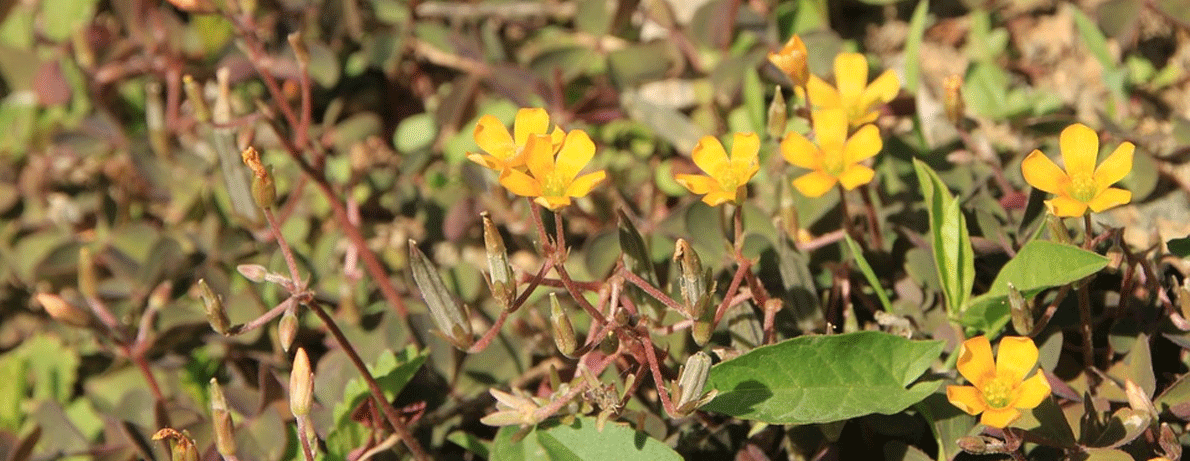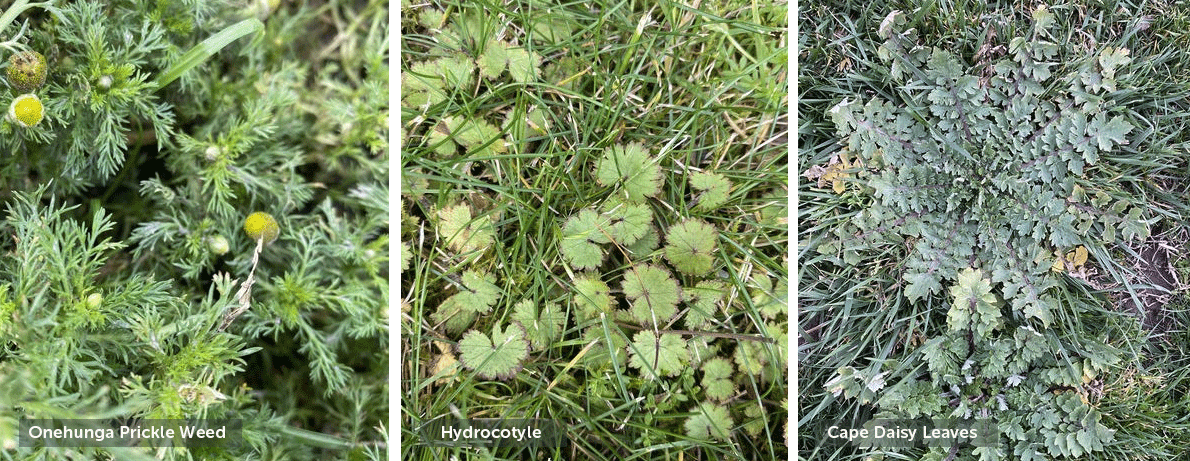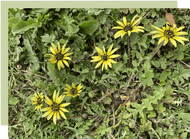Posted by Kelly Jean Reyland
4th Apr 2024
Keeping your lawn weed free

A well-kept lawn looks great and helps the surrounding area look better. And one of the ways to help your lawn look its best is to keep it weed free!
One of the best pieces of advice you can take regarding weeds (also pests and diseases) is to deal with the issue when you first see it. The issue will only get worse with time; that's pretty much a guarantee! So, when you first see that patch of creeping oxalis, the prickly seed heads of onehunga weed or the distinctive rosette pattern of cape daisy leaves, do something about it. It might be just removing flower heads or seed heads so it can’t spread while you deal with the leaves and roots. Or it might be getting straight out there with some weedkiller to knock it dead. Don’t leave it there to spread and become a bigger problem!
Follow this up by keeping the lawn well fed so it is thick and can easily compete with any weed seeds that attempt to germinate, and finally mow your lawn on a high setting, so the lawn is dense and helps prevent weed seeds finding a spot to germinate.
Weed control
Some weeds are easy enough to remove manually. The cape daisy is a good example. As long as the soil is moist, you can use a daisy remover to gently lever the entire long tap root out of the ground and in one go remove the entire plant. It makes sense to do so when you learn that all the little fragments of each cape daisy leaf created and spread by being run over with the lawn mower can grow into an individual plant.
When a weed has appeared in the lawn in a small, isolated position, it is effective to carefully spot apply a non-selective weedkiller and once the weed is dead, resow the patch with grass seed. Once a weed has spread through the lawn, the most effective way to get on top of the issue is applying a selective lawn weed spray that is appropriate for the specific weed. Ensure that you follow the instructions for how much to apply to how many square metres of ground to avoid burning the grass.
Be aware that most selective lawn sprays are hormone based which work by disrupting cell division or disrupting photosynthesis. It is really important that you don’t put the lawn clippings in the compost or as mulch around existing plants as the hormone will reside in the material for months to come and will affect other plants negatively e.g., putting the compost containing the broken down clippings on your vegetable garden or around your roses and the plants failing to grow or thrive with rolled up, curled leaves.
It will state on the instructions how long the clippings need to be put in the rubbish before it is safe to resume doing so.
You also need to be aware of the surrounding gardens when you apply the spray. A broadleaf weed spray will work on a ‘weed’ or a broadleaf plant, so you need to be very careful with spray drift. It is good practice to hose off any particularly special or important plants if there is any risk of spray drift after spraying. You also need to consider where trees and shrubs overhang the lawn as their roots will come into contact with the spray and it can knock them back in their growth.
Weedkillers fall into two groups – selective and non-selective. Lawn spray is an example of selective where it will kill off broadleaf plants but not the blades of grass when applied at the correct application rates. Glyphosate is an example of non-selective where it will kill off anything it comes into contact with. Unfortunately, any grass weeds such as paspalum or twitch/cooch can’t be controlled by selective weedkillers as they are a grass rather than a broadleaf. They need to be controlled with careful application of nonselective weedkiller.
Some professional lawn care companies do have sprays that control certain weed grasses in a lawn, but they are not available to buy off the shelf for home gardeners. If grass weeds are widespread in the lawn, getting a quote from a lawn company could be the most cost-effective way to get it under control.
Within the non-selective group there are also contact and systemic sprays. Contact sprays will burn off the tops but leave the roots intact. Natural oil or fatty acid style sprays fall in this category. They are effective for very young weeds without established root systems but established perennial weeds will simply grow back from the roots. Systemic sprays will be absorbed through the leaves into the sap system and travel back through the roots killing off the entire plants. This is a much more effective method with established perennial weeds.

Moss in the lawn
Moss can be caused by several environmental factors. Poor drainage / excessive water, too much shade, soil pH being too acidic or poor soil fertility. These are things that should be addressed as well as treating the moss growth. If you don’t treat the cause of the issue, the moss will simply grow back.
Poor drainage or excess water can be improved by adding gypsum to help improve soil structure or adding drainage to the area. In a shady area, you can look at a shady lawn blend which is better suited to the area or look at an alternative to lawn for ground cover.
Acid soil pH can be addressed by regular application of lime and altering the soil pH can make nutrients in the soil more available for the plant to access and use. Lawn fertiliser with added iron sulphate will add nutrients to the soil and help control moss growth. Be careful not to get it on hard surfaces as iron sulphate will stain them.
Maintain your lawn's good looks by keeping weed and moss growth under control. In combination with regular feeding and care it will be an asset to your property.
For tips on lawn care, including sowing, watering and fertilising – see our blog on Caring for your Lawn.
Browse some top Lawn Care products here!
Written for Gubba by Kelly Jean Reyland from Garden Advice NZ (www.gardenadvice.co.nz)


























